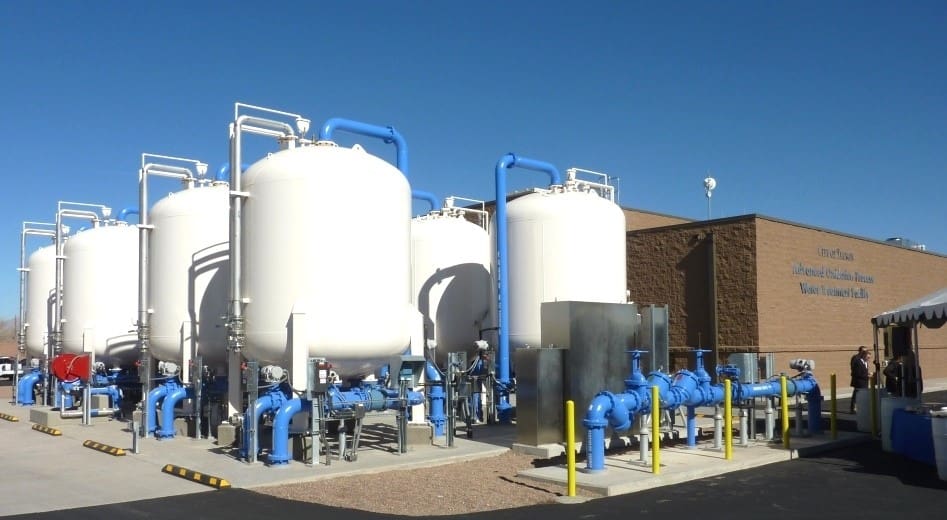Ingenious PFAS Therapy Solutions for Safer Water
The raising occurrence of PFAS contamination in water materials demands an important assessment of ingenious treatment options. Advanced purification innovations and unique chemical therapies existing encouraging opportunities for minimizing these relentless toxins. In addition, arising bioremediation methods use an even more lasting method to tackling PFAS obstacles. As governing frameworks proceed to adjust, comprehending the performance and scalability of these services becomes critical. What effects do these advancements hold for public wellness and environmental remediation, and exactly how can stakeholders properly apply them in diverse contexts?
Summary of PFAS Contamination
PFAS contamination has emerged as a significant ecological and public wellness concern. Per- and polyfluoroalkyl materials (PFAS) are a group of synthetic chemicals recognized for their persistence in the setting and human body, leading them to be frequently described as "for life chemicals." These substances have been extensively used in numerous industries, consisting of firefighting foams, water-repellent materials, and food packaging, mainly due to their water- and grease-resistant buildings.
The extensive use PFAS has actually resulted in their discovery in soil, water supplies, and even in the blood of human beings and pets. Studies have connected PFAS exposure to numerous health and wellness concerns, including developing results in infants, body immune system dysfunction, and different kinds of cancer. Furthermore, the environmental perseverance of these substances complicates their degradation and elimination, elevating concerns about lasting environmental effects.
Regulative bodies are significantly implementing rigid standards to check and reduce PFAS levels in alcohol consumption water and various other environmental mediums. As recognition of PFAS contamination expands, it has become crucial for areas and markets to look for reliable treatment solutions to minimize direct exposure and safeguard public health and wellness.
Advanced Purification Technologies
As the urgency to deal with PFAS contamination heightens, advanced filtration innovations have actually arised as a pivotal part in the remediation initiatives aimed at eliminating these relentless chemicals from water resources. These modern technologies leverage innovative mechanisms to efficiently target and capture PFAS compounds, which are infamously resistant to traditional therapy approaches.
One of the most promising methods is using granular activated carbon (GAC), which adsorbs PFAS molecules as a result of its high surface area and permeable structure. This technique has actually been widely applied in both metropolitan and commercial settings, showing considerable reductions in PFAS concentrations. In addition, ion exchange resins have gotten grip, specifically made to uniquely bind PFAS ions from water, hence facilitating their removal.
Membrane filtering technologies, such as reverse osmosis and nanofiltration, also show effectiveness in PFAS removal by literally dividing impurities from water - pfas management. These systems can achieve high levels of purity, making them suitable for alcohol consumption water applications
Chemical Therapy Advancements
Countless chemical treatment advancements are being discovered to effectively deal with PFAS contamination in water materials. One appealing technique entails making use of advanced oxidation processes (AOPs), which utilize effective oxidants such as ozone, hydrogen peroxide, or chlorine dioxide incorporated with UV light Full Report to damage down PFAS substances right into much less harmful substances. This method has actually demonstrated efficacy in lab settings, showing potential for scalability in real-world applications.
An additional cutting-edge approach is the growth of ion-exchange materials especially created to target PFAS. These materials can precisely adsorb PFAS substances from water, enabling their removal during therapy procedures. Recent improvements have actually improved the efficiency and capability of these resins, making them a beneficial option for water therapy centers.
Furthermore, researchers are exploring making use of chemical agents like persulfate and ferrous ions to boost the destruction of PFAS in polluted water. These agents can generate chemical reactions that facilitate the failure of persistent PFAS compounds.
Emerging Bioremediation Strategies
Current developments in chemical therapy innovations have led the way for exploring bioremediation strategies as a practical alternative for attending to PFAS contamination. Bioremediation harnesses the all-natural metabolic processes of microbes to deteriorate or change contaminants, making it an enticing technique for taking on consistent impurities like PFAS.
Emerging methods in bioremediation consist of the use of genetically crafted microbes that can particularly target and this link damage down PFAS compounds. These microbial stress are being created for their enhanced deterioration capacities, enhancing the performance of the remediation procedure. In addition, researchers are checking out the possibility of plant-assisted bioremediation, where certain plant types might uptake and sequester PFAS from polluted dirt and water.
Another appealing technique is the application of bioaugmentation, which entails presenting beneficial bacteria right into contaminated environments to enhance the degradation of PFAS. This technique can promote much faster remediation timelines and improve overall efficiency.

Governing Structures and Standards
An extensive regulative structure is crucial for effectively managing PFAS contamination and guaranteeing public health and wellness defense. The increasing recognition of per- and polyfluoroalkyl substances (PFAS) as environmental pollutants has prompted various federal and state agencies to develop requirements that govern their presence in water supplies. The U.S. Environmental Protection Agency (EPA) has actually developed wellness advisories and is pursuing establishing enforceable limitations for PFAS in look at here now alcohol consumption water.
State-level regulations differ dramatically, with some states taking on more stringent standards than those suggested by the EPA. These policies frequently include optimum impurity levels (MCLs) for certain PFAS compounds, monitoring requirements, and reporting obligations for water energies. Furthermore, emerging frameworks concentrate on the remediation of contaminated websites, emphasizing the requirement for efficient treatment technologies.

Final Thought
Finally, the development and execution of cutting-edge PFAS treatment services are vital for addressing the prevalent problem of water contamination. Advanced filtering innovations, chemical treatments, and arising bioremediation methods collectively present a complex method to efficiently reduce and weaken PFAS levels. As regulatory structures remain to advance, incorporating these technologies will certainly be important to protect public health and bring back the integrity of infected water sources, inevitably adding to a cleaner and more secure atmosphere.